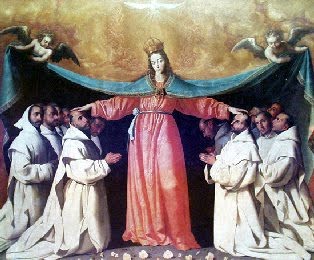 A museum? The word is inappropriate. For there is no orderly display of works of art here, nor historical souvenirs regarding the Order of the Carthusians, but rather an evocation of Carthusian life. And this, on the very site on which, in 1084, André and Guérin set up their Brothers' cells, their oratory, their workshops, and their modest sheepfold. The buildings have undergone many transformations since then, but "the walls", so to speak, are authentic: tourists can walk around today in the place where Carthusian monks, especially the Brothers, lived, prayed and worked. All around stands the wonderful circle of mountains, forests and fields, the motionless and inviolable witnesses of nine long centuries of history. How vast it is, this museum!
A museum? The word is inappropriate. For there is no orderly display of works of art here, nor historical souvenirs regarding the Order of the Carthusians, but rather an evocation of Carthusian life. And this, on the very site on which, in 1084, André and Guérin set up their Brothers' cells, their oratory, their workshops, and their modest sheepfold. The buildings have undergone many transformations since then, but "the walls", so to speak, are authentic: tourists can walk around today in the place where Carthusian monks, especially the Brothers, lived, prayed and worked. All around stands the wonderful circle of mountains, forests and fields, the motionless and inviolable witnesses of nine long centuries of history. How vast it is, this museum!An interesting point in the story of the Correrie is that in becoming a museum in July 1957, it was restored to its original purpose of 1084, which was to welcome tourists and pilgrims, and to protect the silence and solitude of the monks from outside noise. Today too it limits the access of coaches and cars, just as it did in times past, for the carriages of visitors and priors coming to the General Chapter.
The first thing we see if we look inside the Museum is the church: on the walls are Le Sueur's paintings of the life of Saint Bruno (1645), or, more precisely, copies of them, which the famous painter himself worked on. There are also some outstanding 15th century stalls, carved for the Charterhouse of Currière. We go from there along the cloister, still intact in its Carthusian simplicity. The other rooms present information on the history of the Order, a map of the Grande Chartreuse, and various aspects of the life of a monk. The opportunity for the visitor to go through the different rooms of a monk's cell, with the furniture and objects arranged as in any Carthusian cell, is no doubt the moment which leaves the deepest impression. In the words of the author of a brochure on the Correrie: "The Correrie has remained a monastery where the tourist, in his own way, can share in the life of the solitaries."
- Saint Bruno and the Carthusians -











